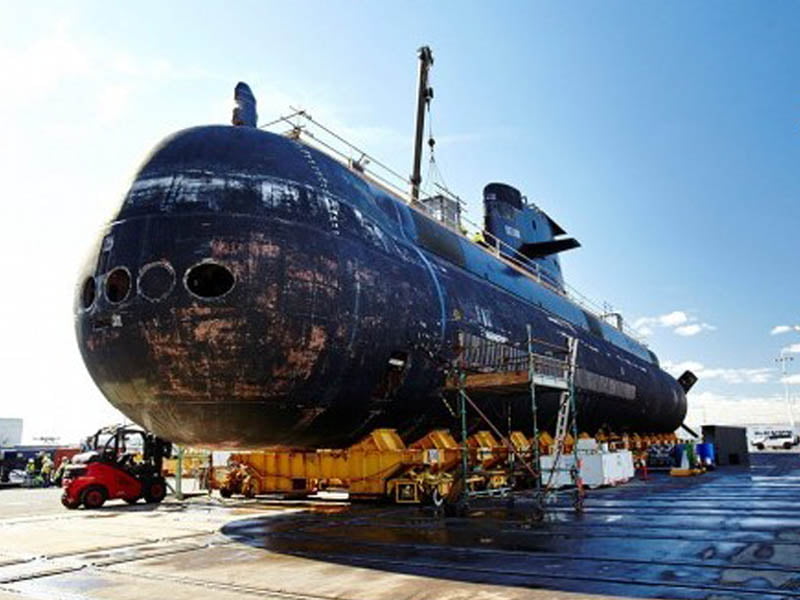The taskforce scoping Australia’s options for acquiring nuclear powered submarines has had its “defining month” in February, passing 200 members and gaining access to a nuclear information sharing agreement with the US and UK.
Defence officials said the “treaty-like” agreement effectively added Australia to the exclusive discussion the US and UK have been having on nuclear technology for more than 50 years and will propel the current nuclear-powered submarine program through its scoping phase.
The program is the first initiative of a trilateral AUKUS security agreement between the three nations and a potential boon for local industry.
However, while the intention continues to be to build the vessels in South Australia, officials confirmed no explicit minimum local industry involvement has been made yet, with few details – including submarine type – locked in.

The submarine type or capability is one of eight key areas being examined by Australia’s Nuclear-Powered Submarine Task Force, established in September last year on the day Prime Minister Scott Morrison announced AUKUS.
The Canberra-based group grew to 137 members by December and passed 200 this month.
It includes officials from several government departments and agencies as well as at least 10 unidentified private contractors, split into several working groups around the key areas. It also liaises with counterparts in the US and UK, including hosting a formal visit this month.
The taskforce has been given 18 months to identify the optimal pathway to deliver at least eight nuclear powered submarines.
February was the taskforce’s “defining month”, according to its commander Vice Admiral Jonathan Mead, because of the start of an information sharing agreement with the US and UK.
“Those type of international agreements are almost treaty like. They normally take years to develop. We completed one in five months,” Vice Admiral Mead told Senate Estimates last week.
“It shows you sort of the accelerated process that we were taking on this.”
The agreement, which was signed in November by Defence Minister Peter Dutton but only came into effect this month, allows a deeper level of engagement on sensitive areas like nuclear technology, and its first use has coincided with visits from US and UK defence officials.
“There is an agreement that was signed in 1958 between the US and the UK on exchange of nuclear information. We have now sort of been brought into that. But until that agreement was brought into place, obviously there were very strict limitations on what they could talk to us about,” Vice Admiral Mead said.
“So this month has been a real defining moment for us because these delegations are out in Australia now, talking to us, looking at our sites, coming to…a realisation of how they can better work with this.”
The Nuclear-Powered Submarine Taskforce has been aggressively recruiting for more members, including candidates outside the Public Service, and is expected to continue expanding over the next year.
It will present a review government at the end of the 18 months on the optimal pathway to deliver at least eight nuclear powered submarines.
But the government is receiving regular updates and will not rule out pre-empting taskforce’s final findings.
Vice Admiral Mead said the government has directed the taskforce to maximise Australian Industry Capability but no explicit minimum has been established yet in the program’s “discovery” phase.
He suggested local uplift may be needed to meet safety requirements.
“When you’re dealing with nuclear powered submarine aspects, the standards of safety and security are very complex. So we clearly have a mandate to maximise [Australian Industry Capability] but we need to make sure that we bring industry along with us. So those providers can meet the absolutely highest standards of safety and security,” he said.
Do you know more? Contact James Riley via Email.

